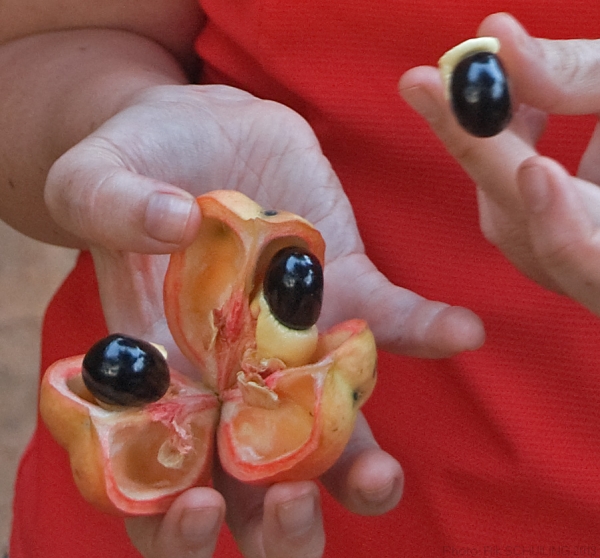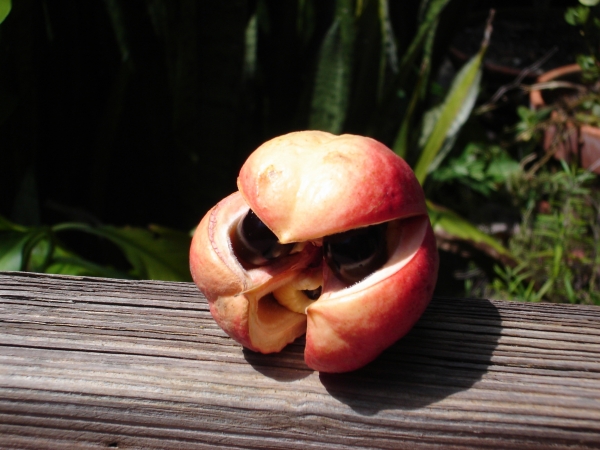
(1/8) The Akee Fruit By Albert Sittler [All Rights Reserved, Used By Permission] (Photo Credits)
![Akee being displayed at feast of the sense display having just been picked with their leaves]()
(2/8) Akee being displayed at feast of the sense display having just been picked with their leaves
![Showing ripe akee fruit and seeds, two of the three seeds with their arils still in place]()
(3/8) Showing ripe akee fruit and seeds, two of the three seeds with their arils still in place By Rik Schuiling / TropCrop - Tropical Crops Services [CC BY-SA 3.0] (Photo Credits)
![Part of ripe akee fruit with two seeds with their arils still attached]()
(4/8) Part of ripe akee fruit with two seeds with their arils still attached By Rik Schuiling / TropCrop - Tropical Crops Services [CC BY-SA 3.0] (Photo Credits)
![Akee Tree growing in the Biodome at Daleys Fruit Tree Nursery]()
(5/8) Akee Tree growing in the Biodome at Daleys Fruit Tree Nursery
![Akee For Sale]()
(6/8) Akee For Sale
![Leaf of the Akee]()
(7/8) Leaf of the Akee
fullscreen1
Akee
Blighia sapida
The brightly coloured orange-red fruits split when fully ripe to reveal three large shiny black seeds, each is partly surrounded but the soft, creamy arils. Akee pods should be allowed to fully ripen on the tree before picking. Prior to cooking the arils ... Read Moreare washed and then boiled for 5 minutes, the water is discarded. The dried seeds, fruit, bark and leaves of the tree are all used in traditional medicine. Akee is a tropical evergreen tree with leathery leaves that grows to around 10m. Native to Africa it was taken to the West Indies before 1778 where it has become an integral part of the local cuisine. Akee is now the national fruit of Jamaica. Caution is advised with using akee as it is poisonous when unripe or overripe.
Other Names: Ackee, Achee, Ackee Apple
$29.00
event_busy When will it be in Stock?
We previously had the most to buy in Apr and Jul. With limited quantities for sale in other months. They are unlikely to be available in Aug and Sep. Remember to click above to get notified when it is available once more.
Preferred Climate Tropical
Grown From Seedling
Max Height (when in the ground with good conditions) +10m
Plants required to Pollinate 3 Plants (Male and Female)
Can it Handle Frosts? Likes Temps above 5deg
Amount of leaves in Winter? All Leaves (Evergreen)
Water Requirements Moderate Watering
Is it a Dwarf Fruit Tree? No (Full Size)
Time to Fruit/Flower/Harvest 5+ Years
Sun or Shade Full (Sun:80%-100%)
Preferred Soil Type Good Drainage
Soil pH Neutral (6.6-7.3pH)
Fruiting/Harvest Months February, March, April, May




































